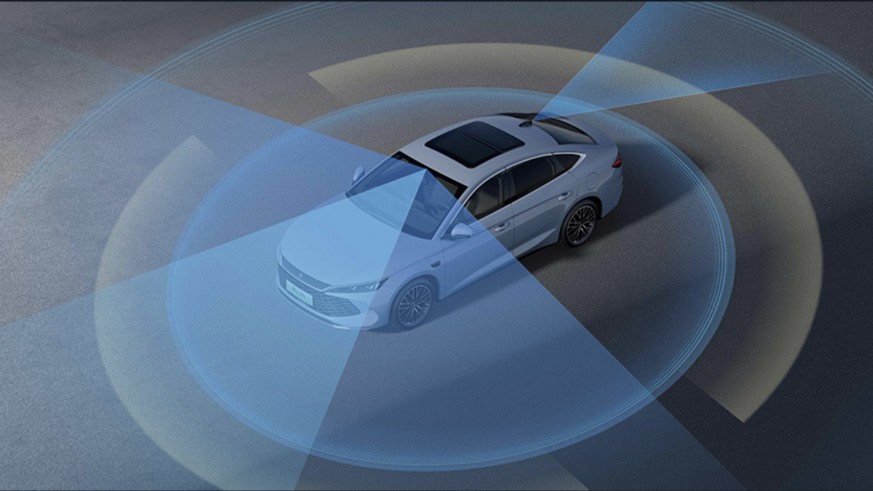Support CleanTechnica’s work through a Substack subscription or on Stripe.
BYD recently launched refreshes of its DM-I models for 2026 — most recently, the Qin L, Song L, and Song Pro. Typically, BYD refreshes models in 1Q when sales are seasonably depressed in China. However, BYD has essentially refreshed its entire DM-I lineup out of cycle. This will let every model qualify for the revised 5% purchase tax exemption next year. It also means entry level models have moved up from roughly an equivalent range of a Chevy Volt to approximately the range of a first-generation Nissan LEAF (~133 km). Meanwhile, their more premium models have increased to 200–250 km of EV-only range. Beyond the EV range, these models use the electric motor as the primary means of propulsion. That already made them superior to ICE-centric PHEVs that engage the engine regularly for moderate acceleration or highway operation, regardless of range rating. The new models now have enough range to cover daily driving on battery power alone, typically not needing to be charged daily.
This added EV capability tends to come with upgraded interiors and additional features. BYD’s active dampening DiSus-C suspension is now standard on more models. The Song L DM-I was also updated with semi-hidden door handles, ahead of the anticipated ban on popout door handles in China. Features like HUD, heated/ventilated/massaging seats, and onboard refrigerators come standard on more trim levels as well. Looking through the spec sheets on BYD’s Chinese website, the cars have significantly improved while prices have stayed largely the same … but an intelligent driving system was dropped from the entry-level trim on some models.
BYD launched its “Intelligent Driving for All” initiative earlier this year and included the DiPilot or “God’s Eye” system across its lineup. This system incorporates 12 cameras, 5 radar sensors, and 7 ultrasonic sensors on the base models, with lidar and enhanced capabilities added to more premium models. At the time, putting these systems on entry-level vehicles seemed like a major step. The thought was that people would see it as so compelling that everybody would demand it on everything. The intelligent driving system is still heavily featured in BYD’s marketing materials. However, we first saw it removed on the new entry-level Han trim. The common assumption was that it was removed for car service vehicles. Now we are seeing it being removed on a few other other entry-level vehicles.
For example, this happened with the 2026 Edition Song Pro DM-i. In February, this entry-level PHEV SUV saw the “Intelligent Driving Edition” launch with a minor refresh. The newest version that launched last week increases battery-only range to 133 km from 75 km and reduces fuel consumption when running on gasoline to 3.2l/100km (73.5 mpg). In addition, the interior was upgraded, with the shifter moving from the center console to the steering column. Overall, it is a better vehicle, while keeping the starting list price at the same 102,800 RMB ($14,435 USD). However, it now costs ~10,000 RMB (~$1,400) to move up to a trim that includes Intelligent Driving.
That is not a huge gap. It is not like Tesla’s new US base models, where you have to move up ~$5,000 in trim and then add $8,000 for software. That gap is almost the entire price of these cars. But both BYD and Tesla do seem to be taking a step back from including ADAS on every vehicle.
That brings up the question: are ADAS/intelligent driving/(supervised) autonomous driving systems as much of a draw as many of us once thought? Is focusing on EV performance and value a better allocation of resources than focusing on ADAS/autonomous driving? Or will a high-performing ADAS system become so compelling that everyone will demand it on every car? Is this just to get people in the door with a low price and then upsell them? Are those who would opt out of ADAS systems just luddites? Or does focusing on EV value provide a better path to technological progress?
I have a feeling that, like many areas, the answer will be: “it depends.” Somehow, EVs have become tied to ADAS, but that doesn’t always need to be the case. BYD isn’t abandoning “Intelligent Driving” and has been rapidly adding capabilities through OTA updates. However, they are providing options. Presumably because consumers want them.
That said, which would you prefer? Would you opt out of intelligent driving systems if you could save money or improve performance? How much is adding them worth to you? Is it something that is nice to have but not a requirement? Would you sacrifice performance for greater autonomous capability? Or would you prefer for EV makers to focus more on making EVs?
Sign up for CleanTechnica’s Weekly Substack for Zach and Scott’s in-depth analyses and high level summaries, sign up for our daily newsletter, and follow us on Google News!
Have a tip for CleanTechnica? Want to advertise? Want to suggest a guest for our CleanTech Talk podcast? Contact us here.
Sign up for our daily newsletter for 15 new cleantech stories a day. Or sign up for our weekly one on top stories of the week if daily is too frequent.
CleanTechnica uses affiliate links. See our policy here.
CleanTechnica’s Comment Policy


